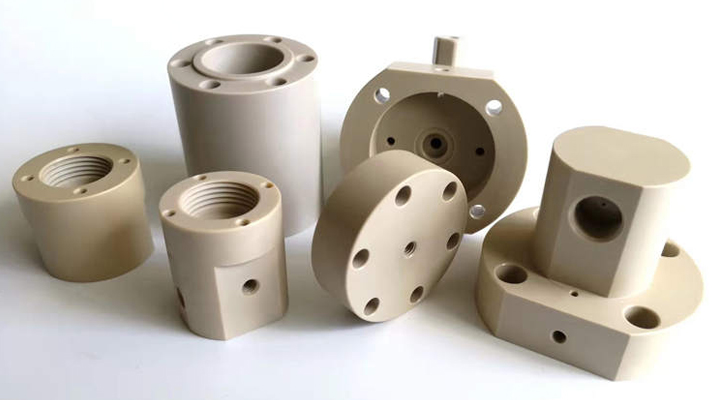The diversity of engineering applications requires that materials can perform best under a wide range of temperature conditions. PEEK is such a material, which has the advantages of being a lightweight polymer in addition to good performance in high temperature and wide temperature range.
PEEK is a semi crystalline thermoplastic that can work continuously at temperatures up to 250 ° C, and has high chemical resistance. PEEK also has excellent tensile properties and excellent creep resistance.
It has made outstanding contributions in reducing mass and improving performance. It can replace traditional materials such as metals and ceramics in many special fields, and has become one of the recognized thermoplastic materials with the highest performance in the world. These characteristics of PEEK make it very suitable for medical, aerospace, semiconductor, oil and gas industries.
It is usually manufactured through gradual polymerization. PEEK is more expensive than other polymers, but it provides excellent performance in multiple dimensions. PEEK has excellent wear resistance and abrasion resistance, which is required by many engineering fields. PEEK is a processable thermoplastic, but important steps must be taken before, during and after processing to provide the best final product.
Annealing
Due to the high melting point of PEEK, compared with other polymers, a faster feed rate and speed can be used in the processing process. Before starting the processing, special annealing requirements must be met to avoid internal stress and heat related cracks during the processing.
Annealing is a process carried out on PEEK bars to release stress and reduce the possibility of stress and surface cracking of PEEK materials during processing. Annealed PEEK is also unlikely to deform. Depending on the time required for processing, several annealing stages may be required.

Cutting Tool
In most cases, silicon carbide tools can be used to machine PEEK. Diamond tools shall be used if PEEK is reinforced with carbon fiber or if a particularly tight tolerance is required. If the cutting tool used is not used for metal, it can also prevent contamination.
Another important factor that needs to be considered when processing a few other compatible plastics is tool wear during PEEK processing. The use of carbon fiber reinforced PEEK grades has a greater adverse impact on tools. In this case, it is necessary to use cemented carbide tools to process ordinary grade PEEK, use diamond tools to process carbon fiber reinforced PEEK, and use coolant to improve tool life.
Cooling
PEEK does not release heat and must be cooled during processing to prevent deformation and cracking. PEEK is stronger and harder than most polymers, but softer than most metals. This requires the use of fixtures in the processing to ensure accurate processing. PEEK is a kind of high heat engineering plastic, which cannot fully dissipate the heat generated in the process. This requires technology to avoid problems caused by low heat dissipation efficiency of materials. These precautions include pecking drill, coolant feeding drill and using enough coolant in all processing. Petroleum based and water based coolants can be used.
Drill Hole
PEEK is less tensile than other plastics, so deep drilling can lead to cracks.



